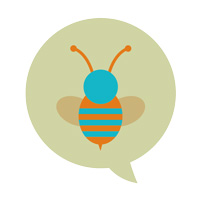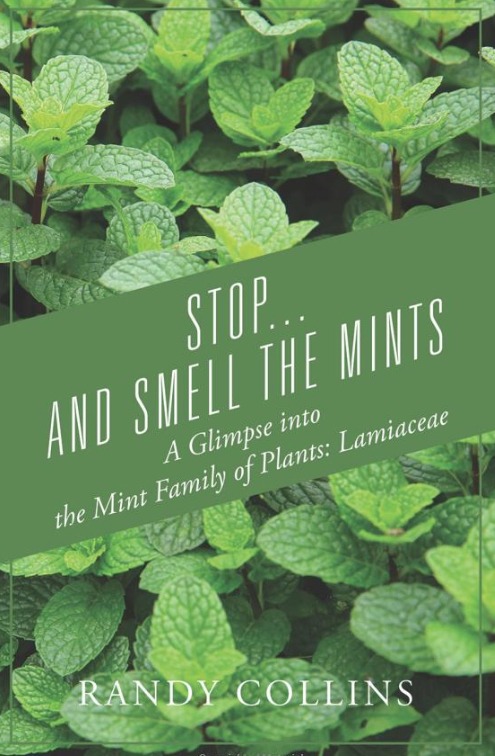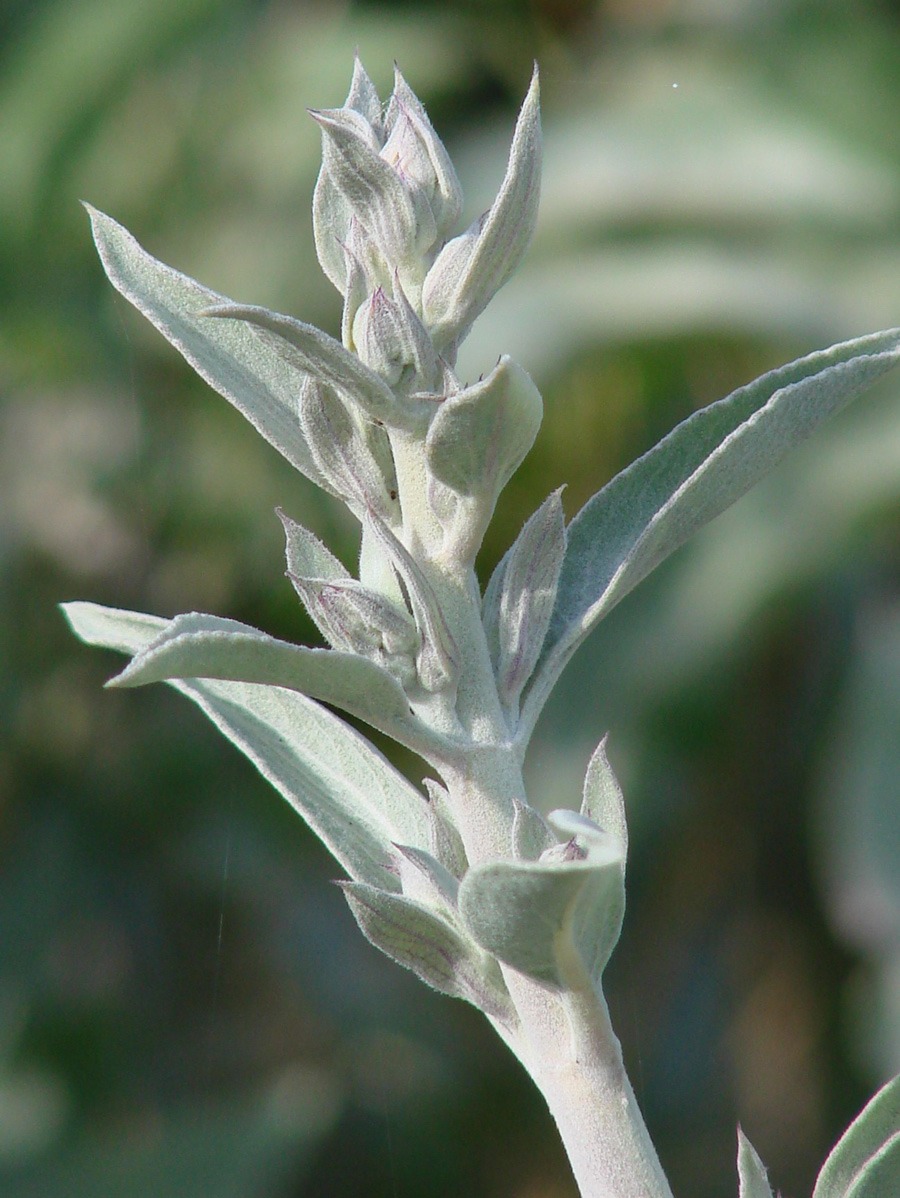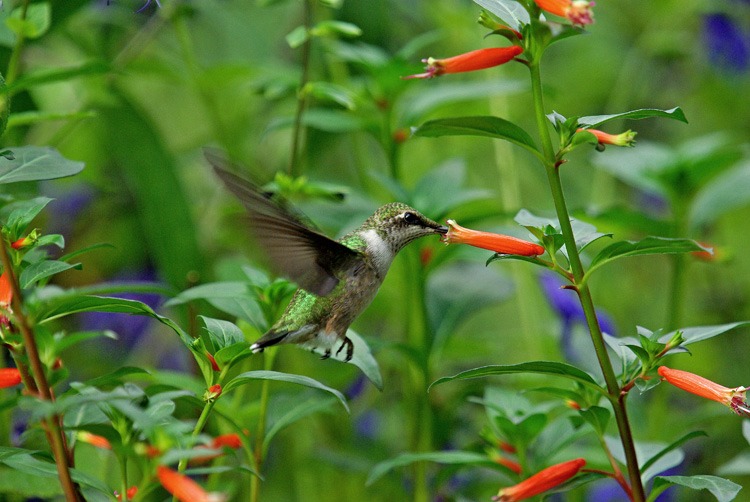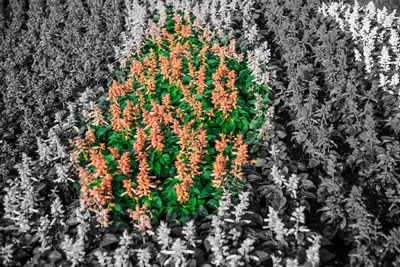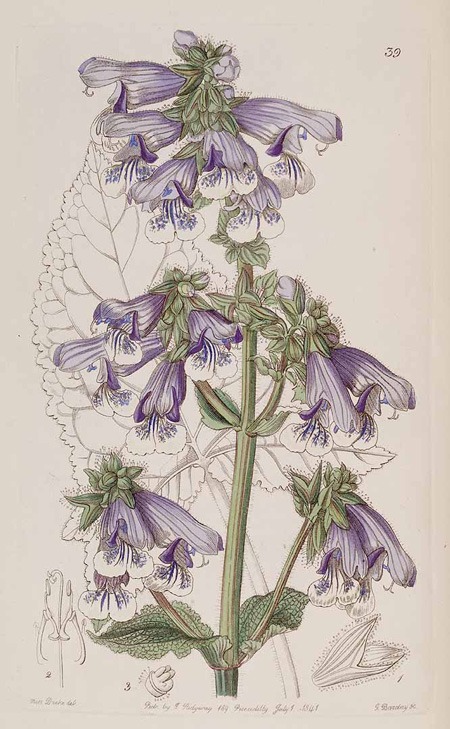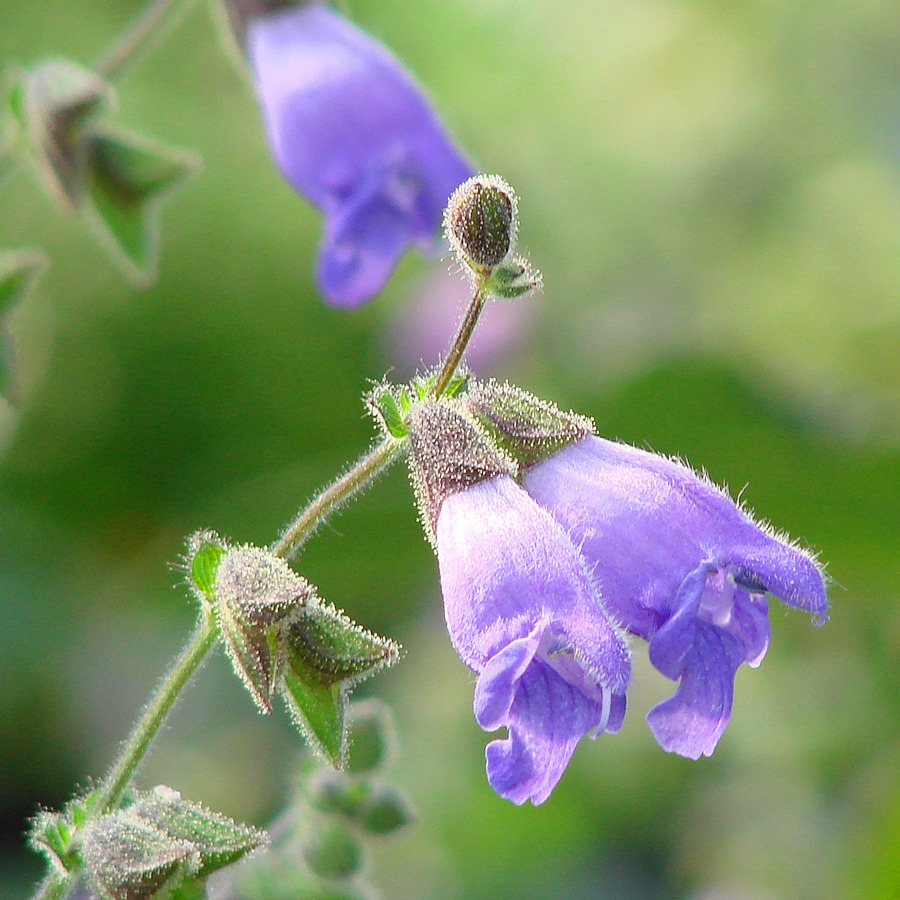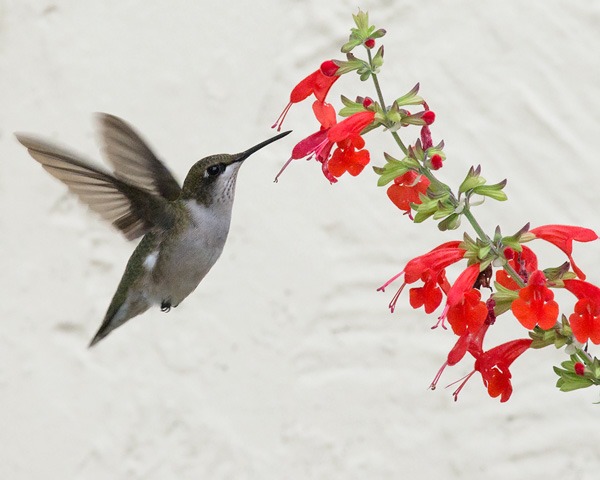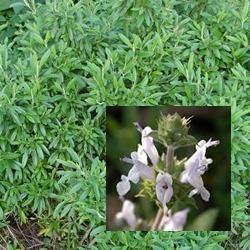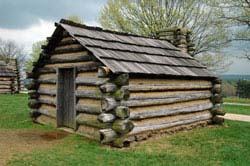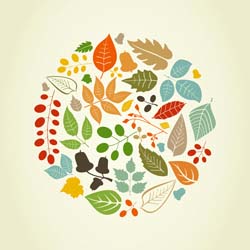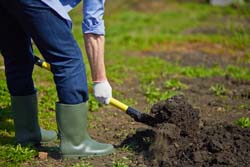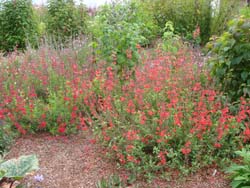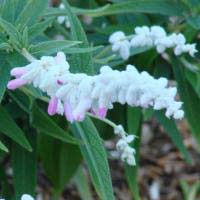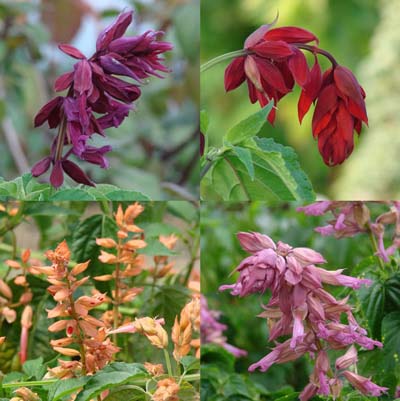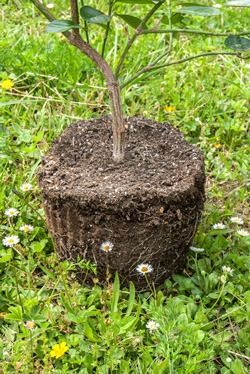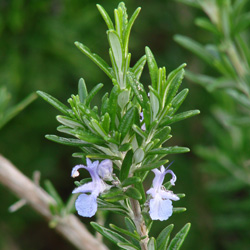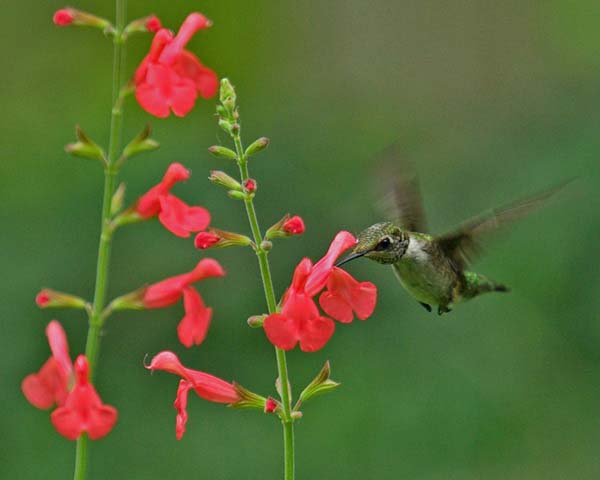
We began publishing our Everything Salvias blog in 2010 for your enjoyment and to help you "get it right" when growing sages that are often unavailable at local garden centers.
It seems like there is an endless bounty of stories to be told. But that's to be expected when covering a genus containing an estimated 900 species -- the largest group within the mint family (Lamiaceae). In addition to Salvias, we write about other species that are either mint family members or low-water companions for our many drought-tolerant Salvias. We welcome comments as well as suggestions for future blog posts.
To access articles rapidly based on your interests, please click on the categories below, which include do-it-yourself videos (Views from the Garden). But please note: This is a dangerous place for a sage lover.
| Explore the Categories: | ||||
| | | | | |
| | | | | |
| | | | | |
| | | | | |
| | | |||
Posted: Thursday, March 26, 2020
Synopsis:
Randy Collins was surprised when he got hooked on horticulture following retirement. But after a move to South Carolina, he was even more surprised at how deer destroyed his gardens until he began growing lots of mint family (Lamiaceae) plants like Salvias. It inspired him to write Stop...and Smell the Mints.
Read the Article
Posted: Friday, February 7, 2020
Synopsis:
White Sage (Salvia apiana) is a sacred plant for Native Americans, especially tribes in its Southern California native lands. It's a challenging plant to grow. Flowers by the Sea Farm and Nursery talks about the history and religious use of Salvia apiana as well as providing a guide to growing it.
Read the Article
Posted: Sunday, February 2, 2020
Synopsis:
All of us love retail services that make our lives easier, especially if they save us money. That’s the case with the new Combined Shipping Option for plant orders at Flowers by the Sea Online Nursery.
Read the Article
Posted: Friday, June 14, 2019
Synopsis:
When massed in borders or standing out as a main attraction in a container planting, Cuphea x ‘David Verity’ is a visual feast for people as well as an actual feast for small wildlife. Rich in nectar, the plant’s dainty, cigar-shaped, orange-red flowers nestle amid a cloud of mid-green leaves shaped like tiny garden trowels.
Read the Article
Posted: Wednesday, June 12, 2019
Synopsis:
It's helpful to understand botanical terminology such as clone, variety, and cultivar. Mr. Sage explains what the three words mean and how the processes of cloning and plant development work. Ask Mr. Sage is a regular feature of the FBTS Everything Salvias Blog and is based on questions from customers.
Read the Article
Posted: Wednesday, May 22, 2019
Synopsis:
Don’t think “drab” when you hear the phrase “dry garden.” With guidance from good books and a willingness to experiment, you can create colorful flowerbeds and landscapes that require little to no supplemental watering. Here is a quick overview of three books that are excellent resources about sustainable dry gardening.
Read the Article
Posted: Tuesday, May 21, 2019
Synopsis:
Dry gardens are flowerbeds or entire landscapes based on ornamental perennials that require little to no watering once well rooted. Many Salvias are excellent, drought-resistant choices for these gardens. Flowers by the Sea Farm and Online Nursery talks about dry garden myths as well as low-water plants.
Read the Article
Posted: Saturday, April 13, 2019
Synopsis:
Plants don’t have voices but they have stories to tell, including tales of discovery. It’s easy to see why the early 18th century plant explorer Victor Jacquemont would have paused to collect the rare Salvia hians while traversing broad expanses of northwestern India. This second half of our article about the alluring species digs into its history.
Read the Article
Posted: Thursday, April 11, 2019
Synopsis:
For plant collectors, a mystique surrounds rare species like Salvia hians (Himalayan or Kashmir Sage). This is especially true when there is uncertainty about what the plant should look like. Perhaps the most famous image of S. hians is a 2012 photograph of UK plant collector Chris Chadwell next to an abundantly blooming stand of large violet-blue flowers with white lower lips. Why doesn’t the Flowers by the See variety of this rare species look exactly like the plant Chadwell found — a plant that seems to be the Holy Grail of Salvia collectors? We’ll do our best to explain.
Read the Article
Posted: Friday, March 22, 2019
Synopsis:
Selecting the right types of Tropical Sage (Salvia coccinea) can be confusing when viewing them in a catalog and seeing similar flower colors. Yet they may differ in cultivation needs, foliage, heat tolerance, and size. Mr. Sage offers ideas for comparing differences and similarities. Ask Mr. Sage is a regular feature of the FBTS Everything Salvias Blog, which responds to questions from customers.
Read the Article
Posted: Thursday, April 12, 2018
Synopsis:
Long before the West Coast was colonized, California Indians used Black Sage (Salvia mellifera Greene) for food and medicinal purposes. Today, it often is bundled in smudge sticks used like incense during purification rituals. Another reason to consider Black Sage sacred is that, among the state’s native plants, it is one of the most important sources of nectar for pollinators. Nineteenth century botanist and clergyman Edward Lee Greene made the plant’s botanical name official in 1892 when he was the first person to publish it in a scientific journal. Among California's native Salvias, it is the easiest to grow in home gardens.
Read the Article
Posted: Sunday, March 18, 2018
Synopsis:
For some gardeners, bringing outdoor plants inside during winter is a practical matter. You want to save money. For others, plants are a bit like pets. You feel tender about your tender perennials and can't bear to think of a lovely sage dying from exposure to harsh weather. This fourth article in our Quick Digs series on preparation for winter in the Salvia garden suggests ways to overwinter sages indoors.
Read the Article
Posted: Sunday, March 18, 2018
Synopsis:
Colorful plantings make entryways attractive. Even better are pretty plantings that are fragrant and provide a sensory lift before you journey indoors. Scent wakes up memories and makes us see in a different way. Here are eight sensible suggestions for adding lovely scents to your landscape.
Read the Article
Posted: Sunday, March 18, 2018
Synopsis:
Salvias are good additions to sensory gardens, because of their fragrance, texture and visual appeal. Plants with sensory appeal stir memory.
Read the Article
Posted: Sunday, March 18, 2018
Synopsis:
This is the fifth article in our Quick Digs series about getting ready for spring in Salvia gardens. The previous post talked about weed control. Now we dig into soil and amendments, which aren't just additions to legal documents. The word also refers to materials added to soil to improve its structure and chemistry. These include organic matter, such as compost, as well as chemical fertilizers and minerals (lime and crushed rock are examples). Choices depend on the plants you want to grow and the current make-up of your garden soil.
Read the Article
Posted: Sunday, March 18, 2018
Synopsis:
This is our second article in a Quick Digs series about preparing for spring in Salvia (sage) gardens. It's easier to succeed at almost anything if you make plans and set goals before beginning a project. This is certainly true in Salvia gardening. Creating a gardening calendar ensures greater success in planning.
Read the Article
Posted: Sunday, March 18, 2018
Synopsis:
This third article in our Quick Digs series about preparing Salvia gardens for spring concerns the Flowers by the Sea Wish List for maintaining lists of plants you want and for use as a gift registry. Our Wish List removes the guesswork from gift giving while allowing givers to surprise recipients.
Read the Article
Posted: Sunday, March 18, 2018
Synopsis:
Weeding is the topic of this fourth article in our Quick Digs series about preparing for spring in Salvia gardens. Getting ready for the emergence of previously planted perennials in spring and for planting new sages (Salvia spp.) requires weeding before amending soil and planting. Then, growing vigorously spreading sages and ones rich in aromatic plant chemicals called terpines can help control weeds.
Read the Article
Posted: Sunday, March 18, 2018
Synopsis:
This is the first article in our new Quick Digs series about preparing for spring in Salvia gardens. As spring approaches and daylight grows longer, first steps for preparing Salvia gardening include recording sages already planted before planning new purchases, repotting cuttings and seedlings, inventorying garden tools and turning the compost heap. When the first new growth arrives, you'll be prepared to remove weeds before they choke sages and other perennials that are re-emerging.
Read the Article
Posted: Sunday, March 18, 2018
Synopsis:
Mexican Bush Sage (Salvia leucantha) is a garden star, but not a demanding diva. That is why Texas A&M University selected Mexican Bush Sage (Salvia leucantha) as one of its 50 “Texas Superstar” plants, all of which are highly recommended for flourishing in unpredictable weather and drought. The many varieties of Mexican Bush Sage are garden beauties that need little pampering. Native to hot, dry areas of Mexico and Central America, they are accustomed to tough conditions. Flowers by the Sea carries a number of striking varieties.
Read the Article
Posted: Sunday, March 18, 2018
Synopsis:
If the world were to coronate a Salvia as its favorite annual, there's little doubt that a deep red variety of Scarlet Sage (Salvia splendens) would bear the sceptre. It's a long blooming, global favorite sometimes called Bedding Sage or Red Sage. When it was first introduced to horticulture in 1822, it was known as Lee's Scarlet Sage. Flowers by the Sea Online Nursery explains the growth habits and history of Scarlet Sage and suggests numerous favorite cultivars to add grandeur to your garden.
Read the Article
Posted: Saturday, March 17, 2018
Synopsis:
Plants may wither even if you regularly water them. When the ground surrounding a new planting's root ball is moist but the roots remain dry, that indicates moisture isn't transferring properly from the outer soil. Flowers by the Sea Nursery outlines a process for diagnosing dry root ball and combating it.
Read the Article
Posted: Saturday, January 27, 2018
Synopsis:
Bees adore rosemary, the powerfully resinous Mediterranean native known both as a groundcover spilling over garden slopes and as an accent or tall hedge plant. Plant scientists who closely examined its DNA suggest moving the Rosmarinus genus into the Salvia genus. Flowers by the Sea now grows two kinds of Salvia rosmarinus.
Read the Article
Posted: Tuesday, August 29, 2017
Synopsis:
Depending on where you live, September may be a time to keep busy planting perennial Salvias or to hunker-down and plan garden recovery following storm damage. Here are some tips from FBTS maintaining and beautifying your Salvia garden this month. New plantings and transplanting of sages in autumn works well; dividing or pruning them doesn't.
Read the Article







